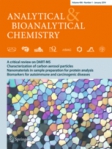Hard x-ray nanoprobe investigations of the subtissue metal distributions within Daphnia magna
Hard X-ray nanoprobe investigations of the subtissue metal distributions within Daphnia magna
 To improve our capacity to evaluate the impact of metals on aquatic organisms, the fundamental processes of uptake, elimination and detoxification need to be fully understood. To this end, the freshwater crustacean Daphnia magna has long served as a model organism for studying whole body bio-accumulation. In order to fully comprehend the active regulation of internal concentrations within aquatic biota, the toxicological research needs to move from the microscopic tissue scale towards a (sub)cellular field of view. We developped a novel sample preparation technique which, when coupled to advanced elemental imaging, reveals the distributions of Ca, Fe and Zn within D. magna at the subtissue level. The presented technique was found to be well suited for trace-level bio-imaging which may ultimately aid in the discovery of new insights in the detoxification processes within aquatic model organisms.
To improve our capacity to evaluate the impact of metals on aquatic organisms, the fundamental processes of uptake, elimination and detoxification need to be fully understood. To this end, the freshwater crustacean Daphnia magna has long served as a model organism for studying whole body bio-accumulation. In order to fully comprehend the active regulation of internal concentrations within aquatic biota, the toxicological research needs to move from the microscopic tissue scale towards a (sub)cellular field of view. We developped a novel sample preparation technique which, when coupled to advanced elemental imaging, reveals the distributions of Ca, Fe and Zn within D. magna at the subtissue level. The presented technique was found to be well suited for trace-level bio-imaging which may ultimately aid in the discovery of new insights in the detoxification processes within aquatic model organisms.
Scientific abstract
The unique potential of nanoscale elemental imaging of major/minor and trace-level elemental distributions within thin biological tissue sections of the ecotoxicological model organism Daphnia magna is demonstrated by synchrotron radiation nano-X-ray fluorescence (nano-XRF). The applied highly specialized sample preparation method, coupled with the high spatial resolution (∼180 nm) and high X-ray photon flux (6×1011 photons/s) available at the European Synchrotron Radiation Facility (ESRF) ID22NI beamline proved to be critical for the high-quality visualization of (trace-)metal distributions on the submicron level within the target structures of interest. These include the branchial sacs on the thoracic appendages (epipodites) of D. magna, which are osmoregulatory regions where ion exchange occurs. For the main element of interest (Zn), detection limits of 0.7 ppm (3 ag) was reached in fast-scanning mode using an acquisition time of 0.3 s/pixel. As demonstrated, synchrotron radiation nano-XRF revealed the elemental distributions of Ca, Fe, and Zn within this osmoregulatory region on the submicron scale, aiding the exploration of possible detoxification mechanisms of Zn within D. magna at the subtissue level.
Full reference
De Samber B, De Schamphelaere K, Janssen C, Vekemans B, De Rycke R, Martinez-Criado G, Tucoulou R, Cloetens P, Vincze L, 2013. Hard X-ray nanoprobe investigations of the subtissue metal distributions within Daphnia magna. Analytical and Bioanalytical Chemistry. 405, 6061-6068. DOI:10.1007/s00216-013-7019-6
